Why You Need Gear – An ER Doc Explains
Why You Need Motorcycle Gear – An Emergency Department Doc Explains
Dr. Anthony Catalano is an avid motorcyclist who works at a Level 1 trauma center in Los Angeles. He has extensive experience treating motorcycle injuries, so we asked him to explain why wearing gear is so important and which types of gear are best.
As an emergency physician in Los Angeles I have seen more than my fair share of motorcycle injuries. I want my experiences and observations to help keep you as safe and un-mangled as possible. But first, a few disclaimers:
Just like the only 100-percent effective way to prevent an unwanted pregnancy is abstinence (albeit with one documented failure, credit the Virgin Mary for ruining an otherwise perfect statistic), the only surefire way to prevent a motorcycle injury is to stay off the bike. Which is lame.
Having acknowledged the inherent risks involved with riding, this guide in no way guarantees prevention of injuries. It can only help you choose gear to limit your risks.
Although my experience with injury patterns is largely backed by data from the National Highway Traffic Safety Administration, my comments on particular types of gear are largely observational and are not based on randomized controlled scientific studies.
If you're reading this it probably means you realize that motorcycling is awesome, and you want to take every opportunity to keep yourself riding until you’re 97. I'm not here to bore you with statistics (like the fact that riders had alcohol in their systems in a third of motorcycle fatalities, or that you reduce your risk of death in a crash by 37 percent if you wear a helmet), but if you’re interested, I suggest taking a look at some of the Department of Transportation data on the matter. Here’s a link to the most recently published review from 2012.
So, without further ado, let’s start at the top and go head to toe.
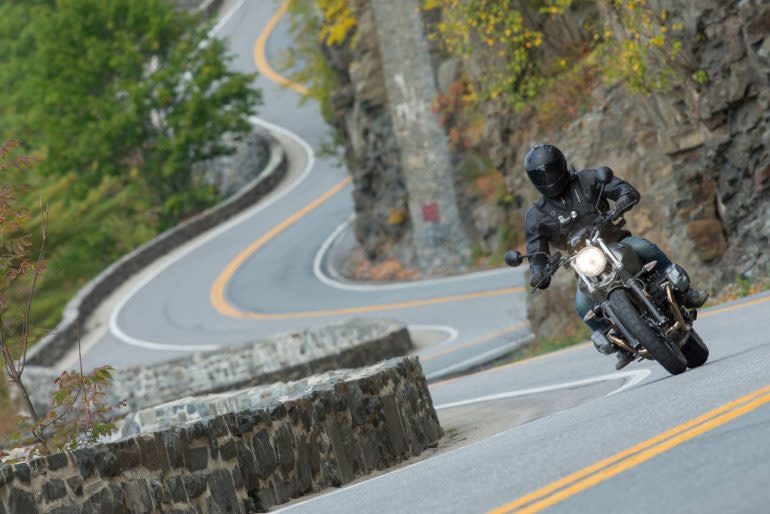
Helmets
Seriously. Wear a helmet. Helmets save lives. And they decrease your risk of risk of badness if you do find yourself eating pavement. Although trauma to the head trails behind lower and upper extremities as the third most common location of serious injury in a motorcycle crash, by far the worst injuries I see are in those patients who don’t wear a helmet. It doesn’t matter how mild the crash was.
READ MORE: ATGATT on a Budget | RideApart
Let’s talk about your head gear options:
Bandana:
So, your style is a big V-twin, on the highway with your saddle bags loaded, hair flowing in the wind as you ride. You look good, so long as your bike stays upright.
Pros: At least the bandana will help prevent a sunburn on your scalp.
Cons: If you crash, your head will explode.
The Doctor’s Verdict: If you only buy one piece of motorcycle gear, get a helmet. No seriously, don’t even buy the bike, just get the helmet.
Skull Cap:
Next up is the skull cap. This means you’re either the bandana-type we just talked about who lives in a state with a mandatory helmet law, or you recognize that even a little protection is better than no protection. Your brain is very, very important. And a half helmet gives you protection if you happen to fly off your bike like a lawn dart and land on that half of your head that’s covered... But it turns out the majority of head injuries to motorcyclists are to the face and chin.
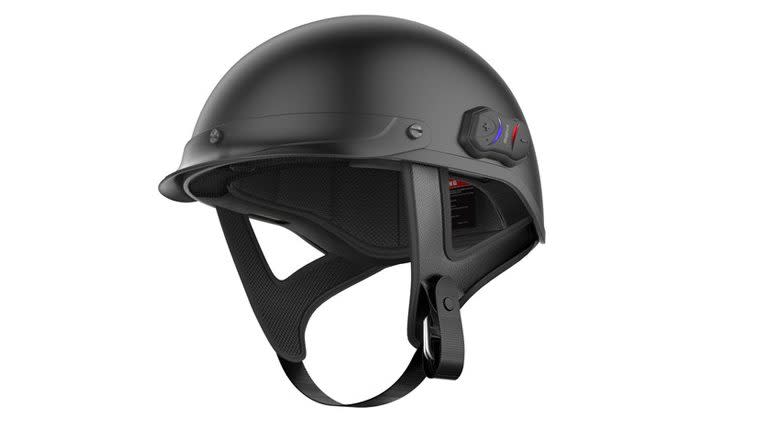
Not to be too graphic about the injuries I tend to see, but let’s just say your ears, your nose, and your eyes really deserve protection, too. Those things don't respond to pavement well. I’ll leave the rest to your imagination.
Pros: It provides more protection than your American flag bandana
Cons: It leaves the most common area of impact vulnerable.
The Doctor’s Verdict: If you choose to go for the classic cruiser look, just know that you run the risk of looking like a hockey player – or likely much worse – if you have even a mild crash. (All our Canadian readers are going to be offended by that comment, Doc! – Ed.)
Three-Quarter Helmet:
So, your 1972 Honda CB450 project is up and running. Now you need a sweet, retro helmet to complete the ensemble. Not only do you look really cool, but you’ve also got some protection to the back of your skull and over your ears. And as an added bonus, your visor/goggles will protect your eyes from debris flying up from that truck you just passed, or those bugs flying around your favorite hill ride.
Pros: Better skull coverage to protect your brain box
Cons: Still leaving the ever-important chin and face region exposed.
The Doctor’s Verdict: Getting better
Full-Face Helmet:
It’s good enough for Iron Man. And it helps Boba Fett look like a badass. And when a paramedic comes in holding one, I feel a lot better about the rider who was wearing it. I’ve seen a couple of cracked visors in the past, but, in general, if someone comes in with significant head or face trauma wearing a full face helmet, they have some other major injuries that I’m worried about, too.
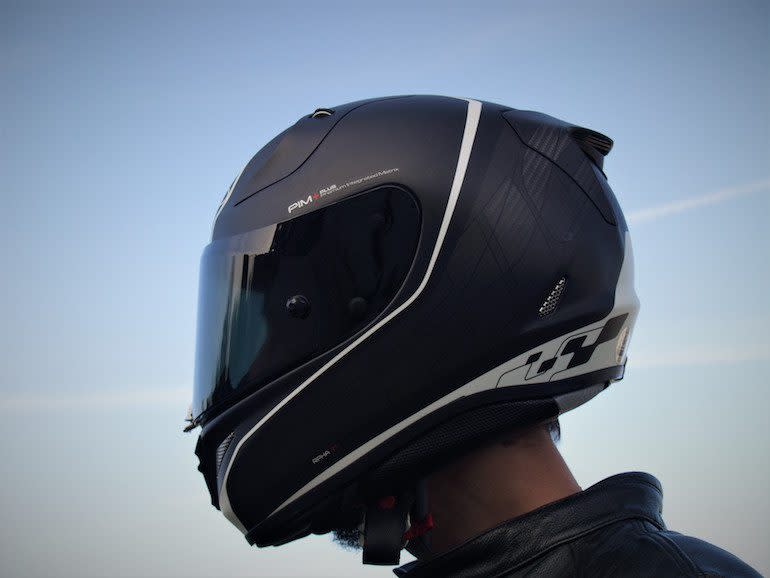
"What about modular helmets?" I hear you ask. To tell you the truth, I’ve only seen a handful of these come in and I can’t really speak to their integrity versus other helmets. There is some theoretical risk of having lower structural integrity (as opposed to a standard full-face helmet) in a crash, but I haven’t seen one break yet. It’s probably fairly comparable to their rigid-jawed cousins, but I leave this argument to the folks in engineering.
Pros: Full head protection, including the face and jaw.
Cons: Helmet hair.
The Doctor’s Verdict: They look cool, they’re well-ventilated, and they provide the best protection.
Conclusion:
Your choice in helmet is up to you. You need to balance style and your risk tolerance with safety. I have yet to see a rider come in with a heat stroke from wearing a full-face helmet and riding gear, even on triple-digit days, and the added protection is definitely worth it. Buy a helmet. Doctor’s orders.
Footwear
By far, the most common injuries I see in crashes are to the lower extremities. National data corroborates my experience and shows that the average US hospital bill for motorcyclists who sustained an isolated single lower extremity injury was $21,000; the average broken ankle or leg is likely to cost more than your bike and gear combined. While insurance may cover your hospital bills, you’re still going to be out of work and have a long, long recovery time.
READ MORE: If You Buy a Motorcycle You Will Not Die; You Will Live | RideApart
While the national data suggests that the most common site of injury is the leg, it seems from my experience that ankle fractures might actually be the most common (I suspect some of the data's "leg" fractures might just be miscoded ankle injuries). These can be bad. I’d say four out of five times I see bones sticking out in the open the legs of motorcycle crash victims are involved.
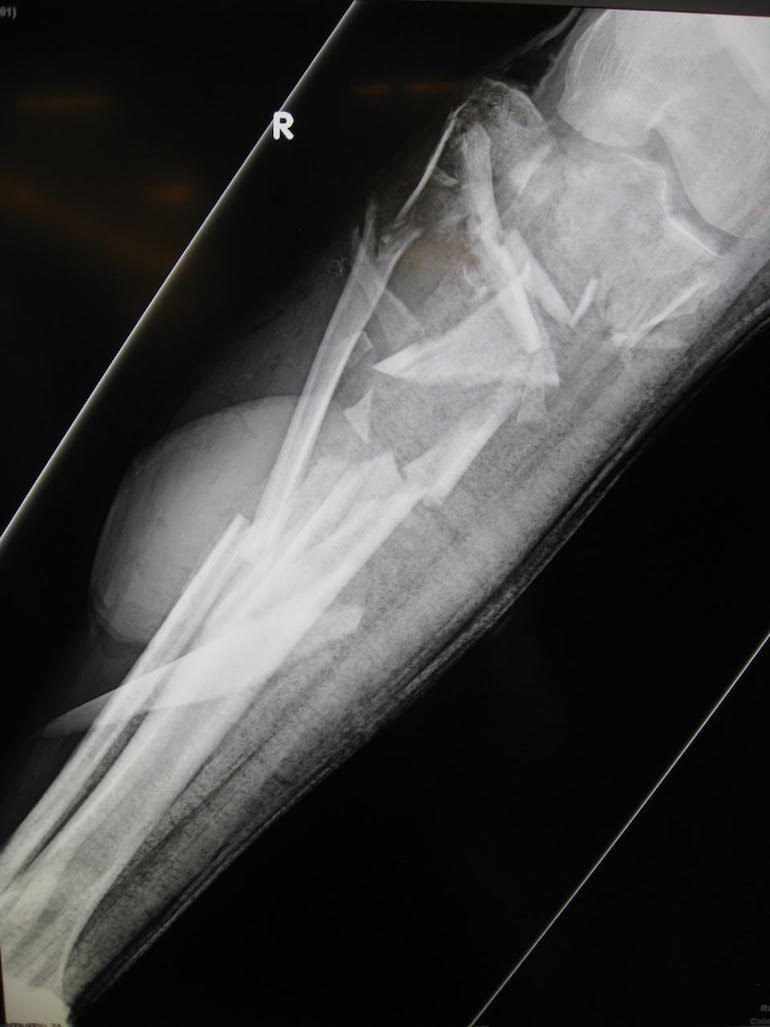
So, what to wear?
Flip-Flops:
Unless these have been welded to the pegs, and you are only riding the bike onto a truck or trailer to get the bike to a shop so they can be removed, don’t wear sandals on a bike. Please. Just. Don’t.
Pros: None. Don’t wear flip-flops on a bike.
Cons: Bad tan lines. No protection from abrasions or fractures to the toe, foot, ankle, leg, or anything else.
The Doctor’s Verdict: Get some shoes, hippie!
Tennis Shoes:
OK, so you’re riding your bike to meet your friends after work, going to the gym, whatever. Shoes at least provide some protection against the asphalt in the event of a crash, but don’t provide much support to prevent ankle or leg injuries. This is probably the most common type of footwear I see, and the most common with bad fractures.
Pros: Versatile. Easy portability from bike to life.
Cons: Susceptible to fracture, especially in the ankle.
The Doctor’s Verdict: No ankle protection.
Boots:
I like boots. A lot. Maybe it’s the country boy in me (the only pair of closed-toed shoes I had until I was 22 was a pair of Ariat roper boots), but boots can be everyday wear that provide pretty decent protection in a wreck. They provide excellent abrasion resistance (assuming they are made of leather) and take some of the stressful forces off of your bones, though if you do have a broken bone under there it can be a bit painful when we have to take your boots off to get to it.
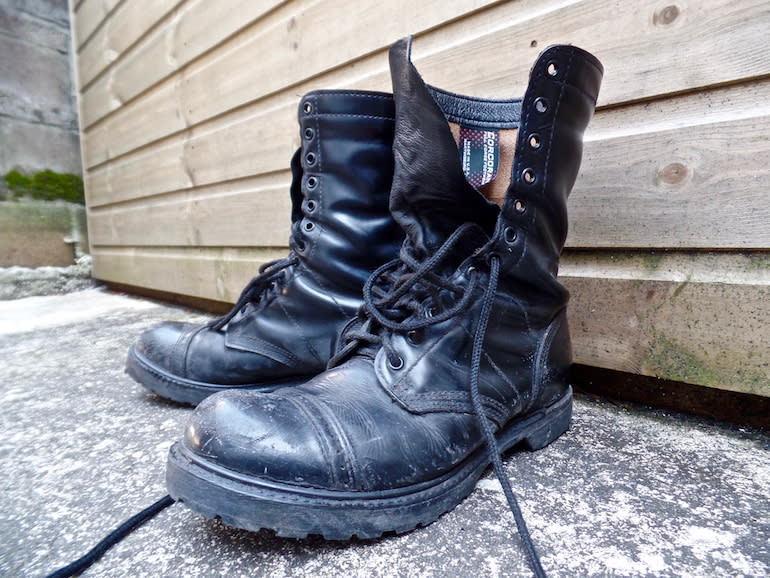
Pros: Stylish, good abrasion and joint protection.
Cons: Not rigid, forces still applied to leg.
The Doctor’s Verdict: This is what I wear, as it’s a good compromise between style, comfort and protection.
Riding-Specific/Sport/Racing Boots:
OK, these are the real deal. Again, this is just based on my experience, but I have never seen an open fracture with someone wearing a pair of riding-specific boots. These things are rigid and give excellent support to your leg and ankle, taking a lot of the pressure off of your non-adamantium infused skeleton. Some of the newer boots out there actually look pretty decent with a pair of jeans, too, so you don’t look like a tool when you get off your bike.
Pros: Best available leg support
Cons: Rigid, not as versatile
The Doctor’s Verdict: If you’re a canyon bomber, hitting the track, or take your bike out for pleasure rather than commuting, I definitely recommend getting a pair.
Summary:
While nothing can bring your risk of leg/ankle/foot injuries to 0 percent, investing in some good footwear can limit your chance of spending months in a cast and off the bike.
Jackets
Although less common, thoracic and abdominal injuries are much more dangerous than lower extremity injuries. A good motorcycle jacket also helps protect you from the second most common site of injuries: upper extremity. (But I just really wanted to stress the importance of good footwear, since it’s often overlooked.) It’s definitely evident which riders have invested in a good jacket when I’m reviewing the list of injuries at the end of a chart.
READ MORE: 10 Common Motorcycle Accidents and How to Avoid Them | RideApart
The most common skin injuries I see are probably to the upper extremities. These aren’t generally simple lacerations I can inject a little lidocaine into to numb up, but huge areas of skin abrasions. In those cases there is nothing I can do to help with the pain when I am scrubbing asphalt out of a wound. Prevention is absolutely key, so let's take a look at your options:
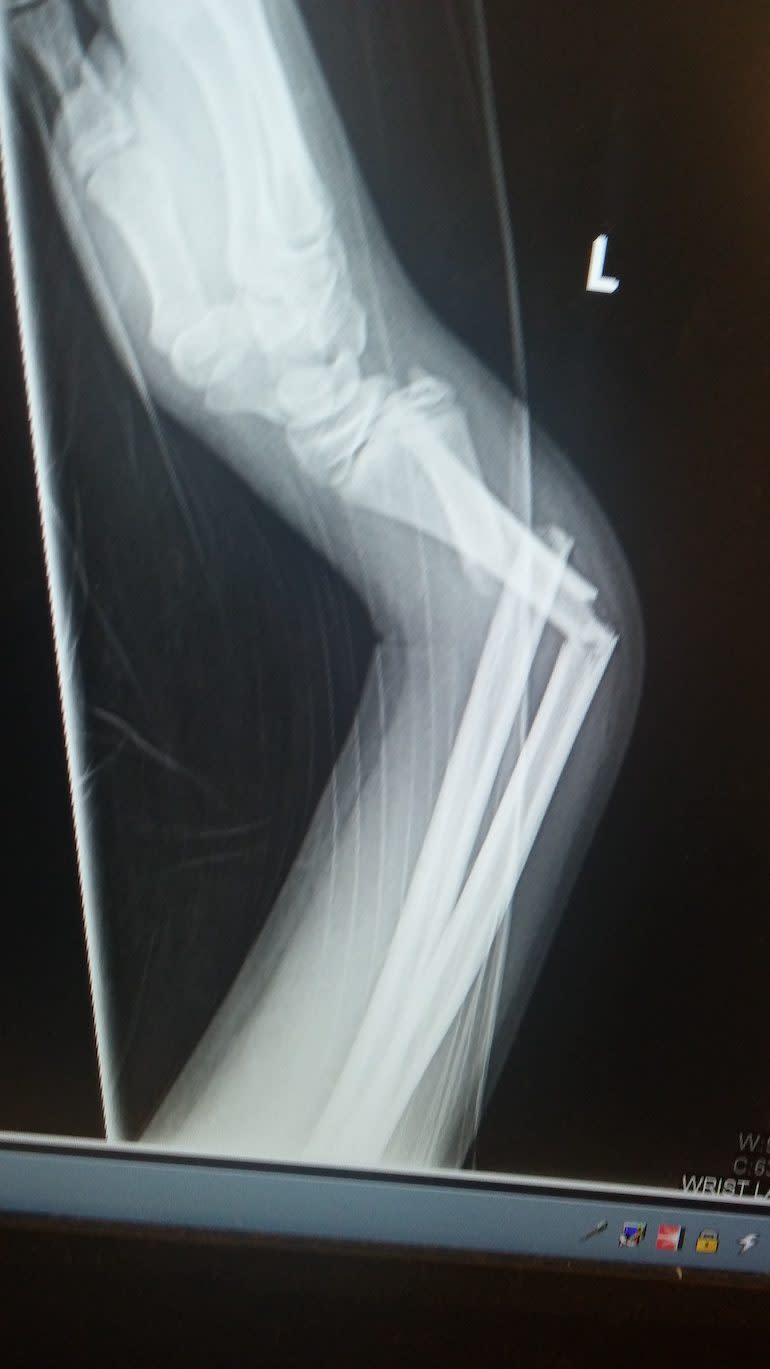
Tank Top:
There’s a word used in some circles for riders who speed by wearing a Lebron jersey: squid.
Pros: Easiest way to look like a tool
Cons: If you fall, you will break every bone in your body, your organs will explode, and your skin will look like Blackbeard caught you stealing extra ale rations from the galley and wanted to make an example of you.
The Doctor’s Verdict: It makes me cringe every time I see someone rocking a tank top on the road, because I know what they look like on a gurney.
Leather Vest:
Your biceps make Dwayne Johnson jealous. It’s 112 degrees on your August trip through the desert, and you’re low on Vitamin D. A leather vest will at save some of your skin if you slide on the asphalt, but won’t protect you from more severe injury.
Pros: Better skin protection than a T-shirt.
Cons: Still relatively unprotected, susceptible to fractures and significant thoracic, spine and abdominal injuries.
The Doctor’s Verdict: This is the absolute minimum I would ever let someone I care about ride in.
Jackets:
This is a general, broad category, but pretty self-explanatory. I’ll skip the talk about how useless your Adidas windbreaker is and move right on to leather and textile riding-specific jackets. Both styles feature material that provides optimal abrasion coverage if you take a spill, and some cushion to your fall. Your best bet is to pick up a jacket with armor. Getting CE-approved armor is the best way to give your vital areas a little additional coverage. I’ll tell you again from experience: armor works. And, in general, injuries are less severe in riders who take protection seriously.
READ MORE: Ask RideApart: Explaining Motorcycle Armor | RideApart
I can’t speak to their effectiveness from experience, but many jackets come with "sliders," too: hard plastic, external pieces at prominent points that can help turn some of the compressive forces that would otherwise be transmitted to your fragile skeleton and turn them into lateral motion on the ground.
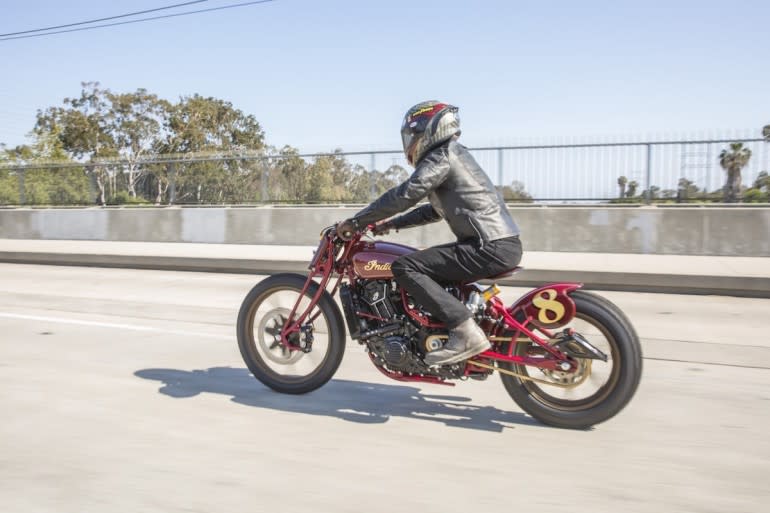
Pros: Best protection, and you still look awesome
Cons: Hotter in the summer months
The Doctor’s Verdict: Take your protection seriously. Even if you’re lucky and just have some road rash from a small skid you will be kicking yourself for not wearing more protection. Do yourself a favor and splurge on a jacket.
Summary:
After your helmet, your jacket protects the most important structures you have. And you actually look badass the more protection you get.
Gloves
Your hands are important – very, very important. It surprises me how many riders I see who aren’t protecting their hands from injury. I’ll agree it looks a bit dorky to be wearing huge gauntlets on a warm summer day. It’s like wearing snowboard boots with a pair of shorts, or Uggs with a mini skirt. Something just doesn’t sit right in your soul. And to be honest, as much as I preach about rider safety, I’m not immune to the desire to just go out for a quick ride with naught but a T-shirt. I'm not proud of it, but, yeah, I've done that. But I will never ride without gloves.
READ MORE: How to Find the Right Motorcycle Gloves | RideApart
Yes, sometimes I look like a dork, but nothing sucks quite as much as losing the use of your hands. (Unless you're Doctor Strange, in which case severe hand injury could ultimately result in your gaining magical powers – Ed.) There are millimeters of skin between the asphalt and the complex web of tendons that give your fingers the dexterity they need to change a spark plug, and it doesn’t take much to cause some truly horrific damage. True, most of the tendons that help you use your hand are in your forearm (so, wear a jacket) but even something as simple as a finger or hand fracture that heals 10-20 degrees off can permanently affect your ability to do everything in life. Let's not even talk about tendon lacerations, nerve damage, or amputations.

So, breaking down your options:
Bare Hands
Your hands sweat, I get it.
Pros: Keeps your hands cool.
Cons: No coverage.
The Doctor’s Verdict: Something is better than nothing; anything is better than nothing. As with flip-flops, just don't do it.
Fingerless Gloves
Fingerless gloves are a compromise, and for some folks they look relatively cool. Riders I see in the emergency department who are wearing fingerless gloves and take a mild spill tend to fare much better than those without any coverage. Distal fingertip injuries, even partial amputations, can be preferable compared to injuries that occur more proximally in your fingers, hands or wrists, but they’re still painful and can take quite a while to recover.
Pros: Coverage over the most important part of your hand. Looks good, brah.
Cons: Provides no structural support, and still leaves your fingers and wrists exposed.
The Doctor’s Verdict: This is the minimum amount of coverage I would suggest on any ride. I wear more hand protection than this no matter what I’m else wearing.
Short Riding Gloves
This is what I wear every time I’m on a bike – more because even I suffer from vanity, since I generally ride a cruiser and gauntlets look a bit off. If I had a Ducati in the garage I would upgrade in a heartbeat. There are two general types of motorcycle-specific gloves I want to mention: one type is a generic full-fingered leather or synthetic glove; the other has hard plastic “slider” components on the outside. The hard plastic in these serves both to protect your vulnerable bones and joints, but also helps decrease abrasive forces that might eat through the glove into your skin. Riders with either type of full-fingered glove tend to do well. I don’t think I’ve seen a noticeable difference in outcomes and injuries between the two. I have hard plastic knuckles because I care about my hands.
Pros: Provides abrasion and crush protection along the entirety of your hands
Cons: Leaves your wrists and forearms exposed, and – depending on the specific set you get – might not provide significant protection against fractures.
The Doctor’s Verdict: Again, these provide a good compromise between style and protection.
Gauntlets
The name even sounds intimidating. These guys are meant to be worn over the sleeve, and are worn by professional racers for good reason. They provide a lot more coverage over vulnerable joints and cushioning over your distal forearm to prevent wrist fractures. The riders I see coming in after a crash with gauntlets are generally those who take their safety seriously. They have motorcycle-specific jackets with CE Armor, boots, and a full-faced helmet. This definitely confounds the facts a bit, but they do noticeably better for a similar injury mechanism than their less-prepared counterparts. I don’t tend to see many open fractures, and their skin is usually intact even when they have other significant injuries.

Pros: The best possible coverage over your hands, fingers, and wrists
Cons: They are bulky, and can stylistically clash with your sleeveless vest and assless chaps.
The Doctor’s Verdict: If you ride a sport, or even most standard bikes, you can pull off the look. I recommend picking up a pair. Your future life-enjoying self will appreciate it.
Summary
Unless your name is Lionel Messi, you need your hands to work, and to enjoy the things you love most in life. Make sure they stay happy with some sort of coverage.
Pants
How much protection and coverage you want down below can be a matter of personal preference. Modern technology has given us relatively normal-looking jeans with armor and reinforcement, and for technical riders on the track or carving canyons full-body suits provide even more protection.
Jeans:
We’ll skip the discussion on going in the buff or a pair of shorts and jump straight to denim. This is usually what I end up wearing on the road, but really it’s only because I haven’t gotten around to buying a pair of safety-lined motorcycle jeans yet.
READ MORE: Why Wearing Jeans on a Motorcycle is a Really Bad Idea | RideApart
Most riders are out in a pair of jeans, and so I think we subconsciously equate them with protection. But denim is just fancy cotton, it rips and tears easily, and doesn’t give you much padding. Remember, the lower extremities are still the most common site for crash injuries, and after a good pair of boots your pants are the only piece of protection they get.
Pros: Jeans look good, and it will protect you from the sun and some debris, and give you an extra eight of a second before you start to donate skin cells to the highway.
Cons: No padding, tears easily.
The Doctor’s Verdict: Again, this is really the bare minimum of what I’d recommend anytime you’re on two wheels.
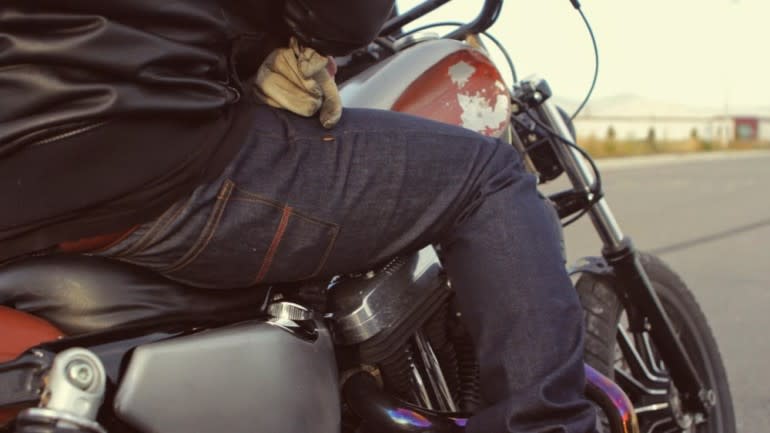
Riding Pants
There are a whole host of options out there: textile, leather, denim with a Kevlar-like lining, and so on. Some of the most common lower extremity injuries I see are hip and pelvis fractures, and many of these riding pants will give you a little padding and protection in the vulnerable areas. Remember, too: there are other important body parts really close by. You don’t want pointy pieces of fractured bones to bump into them.
Pros: Abrasion-resistant materials and strong seams to protect your skin, and – in many cases – armor to protect the bones.
Cons: You can look a bit awkward hanging out at the party you rode to unless you brought a change of clothes.
The Doctor’s Verdict: For any risky activities like track days and bombing canyons (or commuting in Los Angeles), you’ll be glad for the extra protection. Just bring saddle bags or a pack to change when you get there.
Summary
Combined with some hefty boots to provide good support and protection to your lower leg and ankle, it's worth it to pick up a pair.

 Yahoo Autos
Yahoo Autos 
